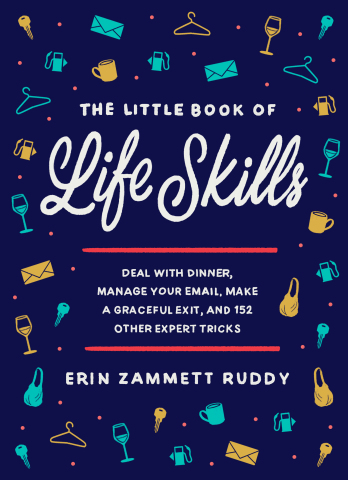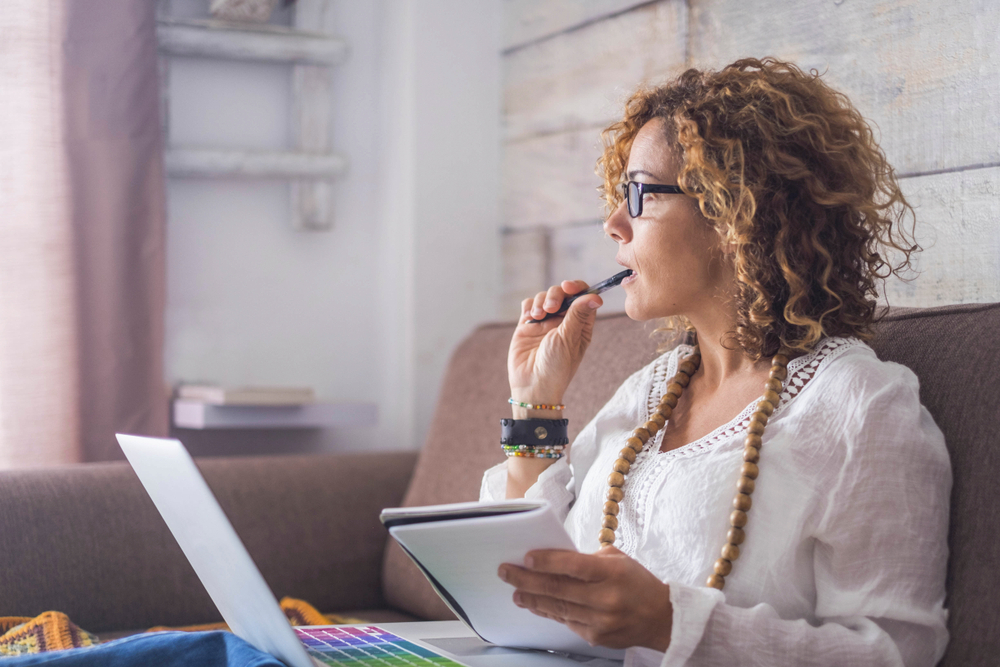As a writer for major lifestyle magazines for the last twenty years, my job has been to get experts’ advice on everything from making a meeting run smoothly to cooking a perfect burger; from asking for a raise to asking for space to asking a neighbor to take down his Christmas lights come March. (All of that is in my new book — The Little Book of Life Skills — by the way, except the Christmas lights thing—honestly, you should just move, because that one’s really tricky.) I love talking to people who really know their stuff, regardless of what that stuff is.
So, why did I set out to write this particular book right now? Because I need this particular book. Like so many of you (just guessing here), I’m craving more efficiency and less stress in my day-to-day routine, a need that’s risen steadily as life has gotten more complicated.
The fact is, there’s a particular order in which everything we do in a day should be done, a best practice that will heed maximum results with minimal frazzle. There are also important tricks and tips for taking better care of our hearts and minds. But so many of us (hi!) just plow through our busy lives without paying attention to how we’re getting from one task to the next.
This book is not going to make you feel bad about the way you’ve been doing things, though. Nor is it going to tell you that what you’ve been doing your whole life is completely wrong. Because it’s probably not. But there’s a good chance it’s not the most efficient, effective way to do things, either.
From creating a calmer morning routine to setting yourself up for a good night’s sleep, and everything in between, I’ve spoken to experts in every field and condensed their wisdom into easy to follow steps for all of life’s simple and not-so-simple tasks. The reward: more time less frustration, and the simple pleasure of a job well done.
There are more than 150 how-tos in the book, but here are two of my favorites — from Thrive Global founder and CEO Arianna Huffington — that will help you approach your day with more calm.
TAKE A NAP
“The most important thing is to not overthink it, and get stressed out by trying (and failing) to take the perfect nap. There are several of our Thrive Microsteps, which are science-backed, too-small-to-fail changes you can immediately incorporate into your daily life, for getting better sleep that also apply to taking a good nap.” —Arianna Huffington
1. Turn the room into a dark sleep sanctuary. Turn down the lights and draw the shades as soon as you start to get ready for sleep.
2. Rid the room of unwanted noise. Sound is one of the simplest and most direct impediments to sound sleep. Identify any sources of unwanted noise (starting with your devices) and either remove them from your room or silence them.
3. Keep the room cool (between 65 and 69 degrees). Set your thermostat to your preferred cool temperature. Research shows that even a small drop in body temperature sends a sleep signal to the brain to initiate sleep.
4. Use anything that helps you sleep. If you usually sleep with aids, like an eye mask and white noise, it’s likely you’ll be better able to nap when you give your body the sleep cues it normally gets.
5. Meditation can help—even a few deep breaths can quiet the mind and ease your transition into sleep. Sipping chamomile or lavender tea can also help calm your mind and shift you into sleep mode. You can change your perspective away from the worries of the day by jotting down a few things you’re grateful for in a gratitude journal. A lot of people find this very effective at the end of the day before bed, but it has the same power during the day before a nap.
6. But most important is to get a nap as soon you realize you are running on empty, even if the conditions are not ideal. Experts say that the best time to take a nap is when you’re exhausted and you’re able to.
THE EXPLANATION:
“While naps are not a substitute for getting adequate sleep at night, the science shows that naps boost our alertness, cognitive performance, and even our immune system. Naps are a great tool when you have not gotten adequate sleep the night before. If you have gotten adequate sleep, you don’t need naps!” —Arianna Huffington
Pro tip: Taking a long nap can leave you with “sleep inertia,” so if you need help waking up, setting an alarm is a good idea. But if you do, use an analog alarm clock so you can leave your phone charging in another room—that will help you wake up from the nap as recharged as your phone. The National Sleep Foundation recommends twenty to thirty minutes for a nap that will help you feel recharged without leaving you groggy.
UNPLUG FROM YOUR PHONE
“Given how profound an impact our relationship to technology has on our well-being, Thrive Global has a lot of Microsteps—too-small-to-fail changes you can immediately incorporate into your daily life—for unplugging. My favorite is to charge your phone outside your bedroom at night.”
—Arianna Huffington
1. In addition to making sure you’re unplugged at night by escorting your devices outside your bedroom before bed, it’s also great to start your day unplugged. And it’s easy—when you wake up, instead of looking at your phone right away, take just a minute or two to breathe deeply or set your intentions for the day. Bookending your day like this will affect all the time in between.
2. Turn off all notifications, except from those who need to reach you. The more our phones buzz at us, the more they condition us to release cortisol, the stress hormone.
3. Do an audit of your phone’s home screen to reduce distractions. Take just a few minutes to determine which apps you really need to access. Keep only tools that add value—not apps designed to consume more of your attention.
4. Put away your phone and look up while commuting or running errands. Unplugging while on the move will help you connect with people, sights, and scenes around you—and take stock of what you’re grateful for.
5. Take a daily “tech time out” to improve your focus and reduce your stress. Set aside time to step away from your social media and your email so you can truly focus on what you are working on or truly connect with yourself and your loved ones.
6. Schedule time on your calendar for something that matters to you—outside of work. Whether it’s going to the gym, going to an art gallery, or seeing family or friends, setting a reminder will help you hold yourself accountable.
7. Mealtimes are also an important time to unplug. One Microstep to try: If you’re eating out with friends, play the “phone stacking game.” Put your phones in the middle of the table. Whoever looks first picks up the check! But really, anytime you’re with someone else—children, family, friends, even colleagues in a meeting—is a time to unplug. You’ll be more present and make the most of your time.
THE EXPLANATION:
“There’s no set amount of times you should unplug—the important thing is that you build time to unplug and recharge into your day and schedule. Recharging ourselves by unplugging should be as routine and habitual as it is for us to recharge our phones by plugging them. Unplugging is important because disconnecting from the world—or at least the digital, screen-bounded version of it—is the only way we can truly connect with others and, especially, ourselves. Unplugging allows us to tap into our natural creativity and wisdom. It allows us to find the calm center of strength in the middle of the storm. And it’s also a key element to lowering stress and avoiding burnout, which is a global epidemic in our modern world.” —Arianna Huffington



